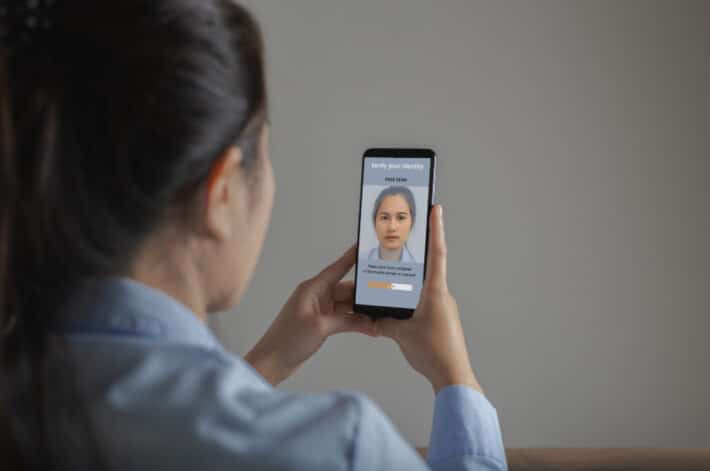The Importance Of Identity Verification In The Digital Age

In the current digital landscape, the significance of identity verification is highly emphasized. From preventing fraud and identity theft to safeguarding sensitive information and complying with regulations, the implementation of effective identity verification measures is essential. Identity verification is executed through techniques such as document verification, biometric verification, and knowledge-based authentication, enabling individuals to securely validate their identity. Despite advancements in technology, challenges like data breaches, privacy concerns, and user experience issues continue to exist in the digital sphere. An exploration of identity verification in digital age and its diverse methods will be discussed in detail.
Why Is Identity Verification Important?
Identity verification is important in the digital age to maintain online security, prevent identity theft, ensure fraud prevention, validate identities, secure transactions, protect data privacy, and uphold personal data protection.
It plays a significant role in enabling businesses and online platforms to authenticate the identities of their users, thereby building trust and credibility. By implementing robust identity verification processes, companies can reduce the chances of unauthorized access and fraudulent activities. Identity verification enhances regulatory compliance, as it helps in verifying the age, location, and other key details of users, ensuring that services are not misused. This leads to a more secure online environment and fosters a sense of accountability among users when interacting online.
1. Prevents Fraud and Identity Theft
Identity verification is important in preventing fraud and identity theft by confirming individuals’ identities, ensuring secure transactions, and reducing the risks related to fraudulent activities.
Understanding the role of identity verification is crucial as it not only protects individuals but also acts as a strong deterrent against cybercriminals looking to misuse personal information. By establishing strict identity validation procedures, organizations can establish a safe space for users to participate in online transactions without worrying about fraud. These verification methods form the basis for establishing trust among users and businesses, promoting secure digital interactions, and decreasing the chances of fraudulent activities.
2. Protects Sensitive Information
Identity verification plays a crucial role in safeguarding sensitive information during digital transactions. It helps enhance online security, protects data privacy, and ensures the confidentiality and security of personal data.
Robust identity verification processes allow individuals to securely authenticate their identities using methods like multifactor authentication, biometric scans, or other advanced verification techniques. These processes act as a critical defense, preventing unauthorized access to private information and reducing the risks of identity theft or fraud.
By establishing a strong foundation of trust and verification, online platforms and services can build confidence among users. This helps create a secure digital environment where personal data is shielded from potential threats and breaches.
3. Complies with Regulations and Laws
Identity verification ensures compliance with regulations and laws by adhering to stringent Know Your Customer (KYC) guidelines, meeting regulatory requirements, and upholding legal standards in digital transactions. This process plays a crucial role in safeguarding against fraudulent activities, preventing money laundering, and mitigating potential risks associated with identity theft.
By verifying the identities of individuals engaging in digital transactions, businesses can build trust with their customers and enhance the overall security of online interactions. Upholding regulatory compliance is vital not only for ensuring the legitimacy of transactions but also for protecting sensitive personal information from unauthorized access or misuse.
How Does Identity Verification Work?
Identity verification entails various methods such as biometric authentication, document verification, and a thorough verification process to authenticate the identity of individuals in digital transactions.
Biometric authentication is an advanced technology that relies on unique physical characteristics like fingerprints, facial recognition, and iris scans to confirm identity. This method offers a high level of security as these biometric markers are challenging to forge or replicate.
Document verification, on the other hand, involves examining official documents such as IDs, passports, and utility bills to verify the data provided by the individual. This step ensures that the information aligns with official records, enhancing the authenticity of the verification process.
1. Document Verification
Document verification is an essential element of identity verification procedures, where individuals are required to submit identity documents for examination to detect discrepancies, prevent fraud, and verify the authenticity of the information provided.
This detailed process is crucial not only for confirming the legitimacy of an individual’s identity but also for mitigating potential risks associated with identity theft and fraudulent activities.
By carefully scrutinizing documents like driver’s licenses, passports, and national identification cards, organizations can uncover inconsistencies or alterations, thereby upholding the integrity of their verification protocols.
Fraud detection mechanisms integrated into document verification procedures act as a crucial defense, flagging suspicious activities and anomalies that may indicate deceitful behavior or unauthorized access.
2. Biometric Verification
Biometric verification involves utilizing advanced technologies like facial recognition to verify user identities based on unique biological characteristics, which helps enhance the security and accuracy of identity verification processes.
Organizations can significantly enhance the efficiency and reliability of their authentication processes by utilizing biometric verification methods. The incorporation of facial recognition technology enables a seamless and convenient user experience, as individuals can easily scan their face for access. This not only boosts security by minimizing the risk of unauthorized access but also simplifies the verification process. Biometric authentication methods are gaining popularity in various industries due to their robustness and ability to offer a high level of assurance in verifying individual identities.
3. Knowledge-Based Authentication
Knowledge-Based Authentication involves verifying user identities through predefined questions or challenges, establishing authentication protocols, and conducting identity verification checks to ensure the legitimacy of the individual’s identity.
By using predefined questions that only the legitimate user would know the answers to, Knowledge-Based Authentication adds an extra layer of security to the authentication process. These questions can cover personal details like birthdates or previous addresses, as well as more customized inquiries based on the user’s history or preferences.
The authentication protocols in this system help determine the accuracy of the responses provided, thereby increasing confidence in verifying the user’s identity. This thorough verification process is essential for strengthening overall security measures and reducing the risk of unauthorized access.
What Are the Different Methods of Identity Verification?
Different methods of identity verification include two-factor authentication, multi-factor authentication, and digital identity verification, each providing unique approaches to confirming user identities in digital transactions.
Two-factor authentication typically combines something the user knows, like a password, with something the user has, such as a fingerprint scan or a unique code sent to their phone. On the other hand, multi-factor authentication adds an additional layer by incorporating something the user is, like biometric data. Digital identity verification utilizes various technologies and data points to authenticate a user’s identity, including behavioral biometrics, device recognition, and geolocation tracking.
1. Two-Factor Authentication
Two-Factor Authentication improves identity verification by necessitating users to present two forms of identification, thereby ensuring secure authentication and dependable user verification in digital transactions.
Additionally, by integrating Two-Factor Authentication into their systems, companies can enhance their security measures by including an extra layer of protection. This procedure usually entails something the user knows, such as a password, and something the user has, such as a fingerprint or a security token. This dual-factor verification system not only authenticates the user’s identity but also guarantees that the individual trying to access sensitive information is genuinely the rightful account holder.
2. Multi-Factor Authentication
Multi-Factor Authentication provides an additional security measure for identity verification by necessitating multiple forms of identification. This helps protect transactions and improve identity management practices in digital settings.
This method aids in lowering the risks of unauthorized access or fraudulent activities by merging something the user knows, like a password, with something they possess, such as a fingerprint or a security token. Through the implementation of multi-factor authentication, organizations can verify that only authorized users can access sensitive data, thereby reducing the likelihood of data breaches or security incidents. This not only safeguards user identities but also strengthens trust between businesses and their customers in the digital domain.
3. Digital Identity Verification
Digital Identity Verification utilizes advanced technologies and user data to authenticate digital identities, improving user verification processes and incorporating cutting-edge identity verification technology.
This innovative authentication approach includes the use of biometric verification methods like facial recognition, fingerprint scanning, and voice recognition technology. By integrating these advanced technologies with real-time data analysis and AI algorithms, digital identity verification ensures a secure and smooth user experience.
User-centric data such as behavioral patterns, transaction history, and device information play a significant role in effectively verifying and validating digital identities. The ongoing development of identity verification technology is transforming digital identity verification methods by offering increased security, efficiency, and user convenience.
What Are the Challenges of Identity Verification in the Digital Age?
Identity verification encounters various challenges in the digital age, including cybersecurity threats, risks of identity fraud, the necessity for strong data security measures, privacy issues, and broad challenges within the identity verification field.
These challenges have become more pronounced with the swift transition to digital services, heightening individuals’ susceptibility to identity theft and unauthorized personal information access. As cybercriminals continually refine their techniques, proactively safeguarding personal data has emerged as a crucial issue.
The implementation of multifactor authentication and biometric verification techniques has become essential to bolster the security of digital identities. With the increased sharing of personal data on diverse platforms, the threat of data breaches and unauthorized access further complicates the already intricate realm of identity verification.
1. Data Breaches and Security Risks
Data breaches and security risks present significant obstacles to identity verification processes, resulting in an increase in identity fraud occurrences. This underscores the crucial importance of implementing strong data security measures and strategies for mitigating risks.
As technology progresses, the methods used for verifying identities have become more advanced, mirroring the increased sophistication of cybercriminal tactics. Identity verification processes are at risk of being exploited, particularly in the aftermath of data breaches that expose sensitive data. The interconnected digital environment has provided a fertile ground for hackers to take advantage of weaknesses in identity verification systems, leading to a rise in fraudulent behaviors.
Consequently, businesses and organizations must prioritize the establishment of rigorous data security measures to safeguard user identities and prevent unauthorized access.
2. Privacy Concerns
Privacy concerns in identity verification processes center around protecting data privacy, safeguarding personal identification information, and ensuring secure identity verification checks to uphold the confidentiality of user information.
Implementing strict security protocols and privacy-enhancing measures is essential in identity verification practices. Additionally, by following industry regulations and guidelines, organizations can maintain the integrity of user data and reduce the risk of unauthorized access or data breaches. Encryption technologies, multi-factor authentication, and biometric verification methods are crucial for enhancing privacy protection during the verification process. Additionally, conducting routine security audits and staying informed about emerging threats are vital for maintaining a strong and secure identity verification system.
3. User Experience
User experience is a critical component of identity verification procedures, with a focus on improving user authentication processes, combating identity fraud, and implementing best practices to streamline identity verification methods for a seamless user journey.
Prioritizing user-centric approaches in identity verification workflows allows organizations to create a more intuitive and efficient process for individuals. Additionally, taking the user’s perspective into consideration enables the development of secure and user-friendly authentication methods, striking a balance between robust security measures and ease of use.
Hence, highlighting user experience in the verification process not only enhances security by reducing friction but also helps build trust with users. Implementing transparent and user-friendly fraud mitigation strategies further reinforces the significance of user-centric design in identity verification workflows.
Frequently Asked Questions
What is the importance of identity verification in the digital age?
Identity verification is crucial in the digital age as it helps prevent fraud, protect sensitive information, and ensure safety for both individuals and businesses online.
How does identity verification benefit businesses?
Identity verification helps businesses establish trust with their customers, comply with regulations, and prevent financial losses from fraud.
Why is identity verification important for individuals?
For individuals, identity verification helps protect personal information and prevent identity theft, which can have serious consequences such as financial loss, damaged credit, and even legal trouble.
What are some common methods of identity verification?
Some common methods of identity verification include biometric verification, document verification, and knowledge-based verification.
What role does technology play in identity verification?
Technology has greatly improved identity verification processes by providing more accurate and efficient methods, such as facial recognition and AI-powered algorithms.
How does identity verification help combat cybercrime?
Identity verification is an important tool in the fight against cybercrime, as it helps verify the identity of online users and prevent fraudulent activities such as phishing scams and account takeovers.



